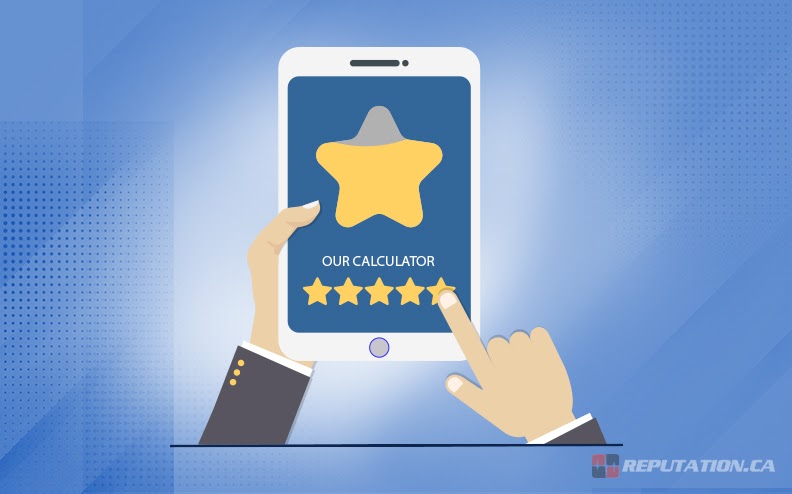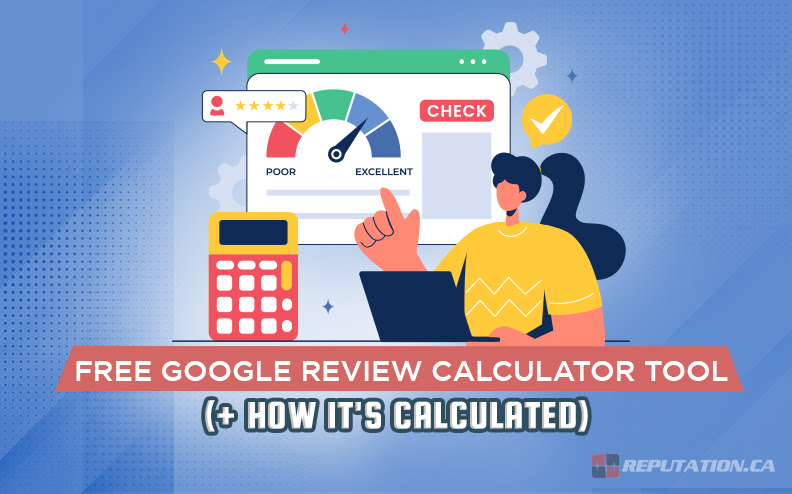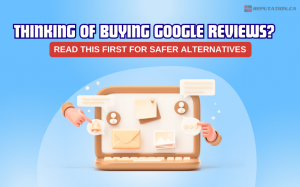Most business owners check their Google review score at least once a week, sometimes more. Plenty of them haven’t quite figured out what actually makes that number climb or drop, though. Google’s algorithm isn’t designed to be transparent, and the math can be pretty confusing at times. A single 1-star review might need between 10 and 20 fresh 5-star ratings just to recover the ground you lost. It’s not hard to spend hours on reputation management that barely makes a dent in your rating when you don’t have a sense of how the system calculates your score. Your local search rankings stay flat as your competitors continue to move up the page.
Google’s rating system depends on a formula that weighs recent reviews more heavily than older ones, and the reviews from local customers who’ve been verified carry more weight toward your score than random accounts do. Google rounds every rating to the nearest tenth, too, so a 4.95 average actually shows up as a perfect 5.0 on your profile, and each one of these factors plays into whether customers click on your listing or scroll past it to check out your competitors.
Customers trust ratings in the 4.2 – 4.5 range more than perfect scores because they feel more genuine and believable. About 97% of consumers read reviews before they pick a local business, and Google gets roughly 73% of all business reviews on the internet, so even a small bump in your rating can turn into more customers and revenue for your business. The calculator below will show you the number of positive reviews your business needs to reach certain rating targets, and it gives you a plan to work toward instead of just waiting to see if your score improves on its own.
Let’s check out how this free calculator can help to improve your Google review strategy!
How Our Calculator Works For You
Google Review Calculator
Our calculator runs all of the numbers and tells you how many five-star reviews it’ll take to hit your target. Your rating shows up right on your Google Business Profile, and Google makes that number simple to find.
Google doesn’t calculate star ratings the traditional way. You’d add up all of the stars from every review, divide that by the total number of reviews, and the final number is your public rating. It’s basic arithmetic that makes sense. The system they’ve built for these calculations is a lot more complex compared to what basic averaging would ever be.
This calculator takes care of all that math for you automatically. In just a few seconds, you’ll know how many five-star reviews you actually need to hit your target rating. Maybe it’s 10 more reviews to jump from a 4.2 to a 4.5, or maybe you’ll need closer to 50.

Real numbers give you the power to actually plan a review strategy instead of just guessing blindly. Goals become much easier to reach when they’re based on concrete requirements instead of vague estimates about what might or might not work. Every business owner wants a better rating – that much goes without saying.
Without knowing how many positive reviews you need, most stay in a holding pattern and just wait around and hope that their rating will somehow get better on its own.
How Google Really Weighs Your Reviews
Google doesn’t weigh your reviews equally when it calculates your business rating. Recent reviews actually carry a lot more weight in the algorithm than reviews that came in a few years ago. A restaurant that brought in new management and turned the business around should have that recent improvement reflected in their rating now – not buried underneath a pile of old complaints from the previous owner’s era.
The algorithm looks at quite a few different factors to help it decide if a review is legitimate. Reviews from verified local customers usually carry more weight in the rankings if those customers have a solid track record of leaving quality feedback for other businesses. A Google Maps user who keeps adding reviews and has had their account for a few years is going to have a lot more of an effect on your rating than a user who has just created a profile yesterday with nothing else on it.

Google’s review filtering system has come a long way over the past couple of years, and it’s become much better at catching reviews that just aren’t real. The platform can detect the patterns that show when businesses try to game the system or post fake feedback. For business owners, that means better protection from competitors who might try to sabotage their reputation. For shoppers and customers, it means the reviews that they’re reading are a lot more reliable and genuine.
A lot of business owners get confused by what they see in the search results from time to time. A competitor with a 4.5-star rating might actually rank below a 4.2-star business in the local listings. A business with a slightly lower star rating but with plenty of recent reviews from verified customers will usually rank higher in the search results.
Google takes these different elements and weighs them together, and this gives you a lot more accurate representation of your business than any basic average ever could.
The Simple Math Behind Your Rating
We just went over how Google calculates your star rating in the last section. The basic idea is pretty simple. But the math at work is worth a look.
The math behind average star ratings is pretty simple. Say that you wanted to calculate this yourself manually (maybe for a sanity check or just so you see how it works). You’d take the total number of 5-star reviews and multiply that by 5. Then you’d take your 4-star review count and multiply that by 4. You’d go down the line like that – 3-star times 3, 2-star times 2 and 1-star times 1. When you have those products, you add them all together and divide it by your total review count. That final number is your average rating.

Google’s rating system works a bit differently, though. The algorithm actually weighs recent reviews a lot more heavily than older ones. A review from last week could count for 3 times as much as one from last year. In practice, that means your oldest reviews will matter less and less as time goes on.
A quick example will show you what I mean. Say that you have 30 reviews from 2 years ago and they all average out to around 3 stars. Last month, you had 10 new reviews, and they were all 5 stars. If Google just used a basic average, those 10 recent reviews wouldn’t move your rating much at all. When recency comes into the picture, though, those 10 fresh 5-star reviews push your rating up quite a bit. That newer feedback has a lot more weight when Google calculates your final rating.
Google’s rating system is actually the reason why a manual calculation of your average review score won’t match up with the rating that’s displayed on your business profile. The platform uses a more complicated method that weighs the date that each review was written. Recent reviews from customers count for more in the formula and have a bigger effect on the rating that customers see when they search for your business online.
Review Timing Can Hurt Your Rankings
New reviews matter for any business, and most business owners already know that. What tends to get missed is when those reviews actually come in. Review velocity refers to how fast new reviews show up on your profile over time. A steady stream of reviews helps with your rankings and credibility. But sudden bursts of activity followed by long quiet periods work against you.
A business that gets 10 to 15 reviews each month will always outperform one that suddenly receives 50 reviews in a single week and then goes silent for months afterward. Google’s system is built to catch natural patterns – the kind that show up when customers leave feedback after they’ve actually visited your location. When a massive spike in reviews shows up out of nowhere with no real explanation for the increase, Google picks up on it and raises big red flags with its algorithm.
Review bursts like this set off Google’s spam filters because the pattern just doesn’t look natural. To Google’s algorithm, it reads more like a person launched a coordinated campaign to artificially inflate their review numbers. Google will quietly start to flag your business as suspicious. After that point, your rankings will drop, and your profile won’t show up as prominently in the local search results.

A restaurant in Portland learned this the hard way during its anniversary week celebration. For months before that, they’d been pulling in maybe three or four reviews each week at most. Then they decided to push hard for more and ended up collecting 40 reviews over just 5 days.
2 weeks later, their Google Business Profile ranking had dropped way down in the search results. All of the work they put in to get more visibility actually hurt them instead.
Consistency is going to win out every time, and it’s by far the biggest part of a strong review profile. A solid system will prompt your customers to leave feedback throughout the year and set up a pattern that Google can see as natural and organic. Your review strategy needs to keep to a steady pace all year long – not short bursts where you try to cram in lots of reviews.
How Response Rates Affect Your Rankings
Business owners who reply to most of their reviews see their local search rankings improve over time. Google’s own data shows that businesses that respond to at least 90% of their reviews rank better in local search results. The algorithm gives more weight to reviews with a business owner’s response than it does to those that just sit there unanswered.
Every time you respond to a review on your profile, Google gives your business a little push in the rankings. Reviews with replies are a signal to Google that a person is looking after your account and paying attention to what customers are saying about you. When you take the time to reply to reviews, it shows your audience that you care about their feedback and you’re willing to listen to what they have to say.
Google has a strong preference for businesses that stay in touch with their customers, and it makes sense – businesses that respond to their customers create better experiences. Your response rate is one of the ways that Google’s system decides if you’re invested in your customers or not. Not responding to anyone starts to look like maybe you’ve given up entirely, or you just don’t care about the customers who are trying to reach you.

Response time matters just as much as the response itself. A reply within 24 hours means a lot more to customers and to Google than something that takes a week to get back to them. When you respond quickly, it tells Google that you care about customer service, and it shows customers they can count on hearing back from you. Anyone who discovers your business in the search results is going to have a better impression of you because of it.
These factors work together to build up your review momentum, and Google’s algorithm pays close attention to that momentum when it’s figuring out how much visibility your business should get. The strength of your review momentum also tells Google if you should be ranking well for the local searches in your area.
What Your Results Actually Mean
Estimate how long it’s going to take you based on your pace right now. Say that you serve around 20 customers each week, and about 1 in 4 of them leave a review. So you’ll collect roughly 5 new reviews per week. At that pace, you’re looking at about 2 months or so to reach your goal.
Your customer volume will change this timeline quite a bit, of course. A busy restaurant might serve hundreds of customers each week. But a home renovation company might only finish a handful of projects in that same month. Try to look at your own numbers and use those to map out a timeline that makes sense for your particular business.
Keep in mind that most happy customers aren’t going to leave a review unless you actually ask them to. The conversion rate (the percentage of customers who follow through after your request) usually sits between 20% and 30%. For perspective, if the calculator tells you that you need 50 new reviews, you’re probably going to have to contact at least 200 customers to reach that number.

Every type of business has different expectations around reviews and ratings. A local coffee shop with 150 reviews and a 4.6-star rating could be crushing it in their market. Take those same numbers and put them on a dental practice in the same area – they’d suddenly look pretty weak. The best way to know where you should be is to look around at what other businesses in your exact category have.
One way to test this is to ask your next 10 customers for a review once they’ve finished their order or received their service. A follow-up email or text works well for this, and the timing actually matters quite a bit – send it within 1 or 2 days, as everything is still fresh in their mind. As reviews come in, see how many customers follow through. This gives you some solid data to work with, and from there, you can make some small adjustments to your request process and set goals that make sense for your business.
Monitor and Manage Your Reputation
A single bad review doesn’t have to make you feel helpless because you’ll actually get what it takes to recover and improve. The numbers can look a bit much at first.
The best part is that you don’t have to guess anymore. You can see the positive reviews you’ll need to hit your target rating, and you can plan everything out with actual numbers instead of just hoping it works out. Use this calculator time and again, and you’ll always know where you stand and what’s next. It’s a roadmap that lets you build the online reputation that drives more customers to your business.

A 4.2-star rating versus a 4.5-star rating – that 0.3-star gap makes the choice for customers. When they’re trying to choose between you and a competitor, it influences whether they click on your business listing or move on to the next option. This affects the phone calls that come through, and it plays into whether they feel comfortable trusting you when they’re making quick decisions from search results. Every positive review pushes your rating a little higher and gives another layer of credibility that customers can see.
At Reputation.ca, we specialize in helping Canadian businesses and professionals take back control of what shows up when they search for you online. Review management, social media tracking, public relations strategy, crisis response – we cover all of this and then some. Maybe you’re up against a cancel culture situation that’s spiraled out of hand, or maybe you just want to build up a stronger and more positive presence online. Whatever your situation looks like right now, we can work with you to make it better. Get in touch with us at Reputation.ca, and we’ll put together a plan that actually makes sense for what you’re going through.







